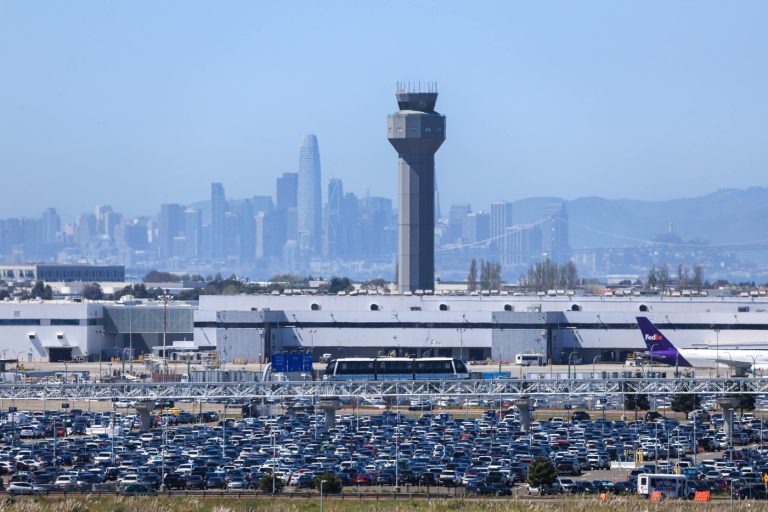In the wake of their sweeping election defeat, it didn’t take long for Democrats to turn on one another, seeking explanations — or scapegoats.
Some faulted defeated presidential nominee Kamala Harris for tactical errors in her hastily constructed but lavishly financed campaign. Others blamed President Joe Biden’s ill-considered insistence on seeking re-election as a fading octogenarian and his failure to curb immigration and inflation.
In the longer term, none of that is likely to matter much. Biden is finished on the national political scene, and Harris’ future is in doubt, given her defeat and the array of younger, fresher potential rivals.
More meaningful, perhaps, is the criticism that reflects the continuing divisions between the party’s left and center that Biden’s presidency papered over — a conflict that seems destined to be revived in the coming months and years.
Progressive Vermont Sen. Bernie Sanders, sounding a theme that echoed his two unsuccessful presidential campaigns, said the party “has abandoned working class people.” Moderate New York Rep. Richie Torres said the party’s “far left… has managed to alienate historic numbers of Latinos, Blacks, Asians and Jews from the Democratic Party.”
Both are true, and neither is simply resolved. But that is a job for the party’s next generation of leadership.
Power vacuum
Like most losing parties, the Democrats will have to face the fact that, for some time into the future, they will have no clear leader — or a multiplicity of them: their two congressional leaders, Sen. Chuck Schumer and Rep. Hakeem Jeffries; a strong bench of governors from most of the major Northern and Western states; and perhaps some who have yet to surface.
In this vacuum, one place the party could look for short-term leadership is the national chairmanship, soon to be vacated by South Carolina’s Jaime Harrison. It’s a position far more important for a party out of power than one with it.
One outstanding prospect — if he goes that route — is outgoing Transportation Secretary Pete Buttigieg. Buttigieg, who unsuccessfully sought the post in 2017 before running for president, is one of the smartest and most strategic thinkers in the party, and one of its best communicators. Democrats could do a lot worse.
It’s important since it will take time for Democratic voters to resolve the party’s quest for direction — probably not until they choose its next presidential nominee in 2028. Already, there is word of some initial steps by members of what could again be a large field.
They include Governors Andy Beshear of Kentucky, Wes Moore of Maryland, Gavin Newsom of California, Jared Polis of Colorado, J.B. Pritzker of Illinois, Josh Shapiro of Pennsylvania, and Gretchen Whitmer of Michigan; outgoing cabinet members Buttigieg and Gina Raimondo; and some younger members of Congress like Reps. Ro Khanna of California and Alexandria Ocasio-Cortez of New York, generally considered Sanders’ heir apparent among party progressives.
Success or failure
In the end, two main factors will shape the Party’s future more than all the bed-wetting, nit-picking, analyses and commissions.
One is how that battle for the party’s 2028 leadership ultimately plays out, and which wing is ascendant. It should be noted that all but one recent Democratic presidential nomination fights have been won by the more centrist candidate, though progressives sometimes wielded power over its subsequent ideological course. (The exception: Barack Obama’s 2008 victory over Hillary Clinton.)
More than anything, the modern political party’s image reflects the strengths and weaknesses of its leader. But political leadership tends to be evanescent.
Presidents Lyndon Johnson, Richard Nixon, Ronald Reagan, Bill Clinton and Obama all dominated the political landscape for a while — like Trump does today. But in no case did it last.
The other perhaps even more important factor is President-elect Donald Trump’s success in office — or lack of it. Recent history is replete with elections which seemed more transformational at the time than a few years later, attributable more to the individual winner or circumstances than to a more basic change.
Related Articles
Walters: Democrats dominate California, but voters have drifted to the right
Letters: Variety of factors | American moderates | Committed to losing | Voters’ preference
Letters: Election fear | MAGA benefits | Trump victory | Misinformed electorate
Democrat Mike Levin wins re-election to California’s 49th Congressional District
California Republican incumbent Rep. Mike Garcia concedes to Democrat George Whitesides
The eventual failures of Johnson, Nixon, Jimmy Carter, and the two George Bushes created an opportunity for their oppositions to revive, while Reagan’s success uniquely enabled his party to stay another four years.
At this point, there is no way to know how much of Trump’s victory is uniquely personal — or the signal of a longer-term GOP trend. Interestingly, his support from most major voter groups approximated George W. Bush’s in 2004 — and his failures helped cost Republicans the White House just four years later.
A successful Trump presidency could pave the way for a longer Republican era and the election of a Trumpian successor, like Vice President-elect JD Vance. Or he could satisfy the goals for which voters elected him, reducing chances for his party’s long-term success and opening the way for the next Democratic generation to gain power.
Carl P. Leubsdorf is the former Washington bureau chief of the Dallas Morning News. ©2024 The Dallas Morning News. Distributed by Tribune Content Agency.












